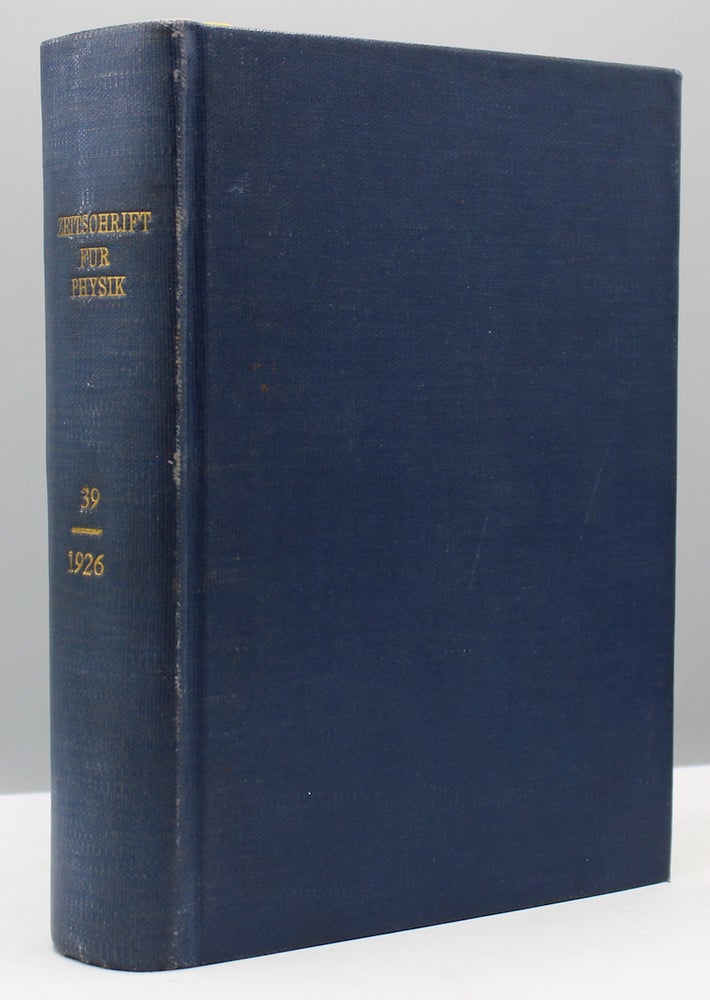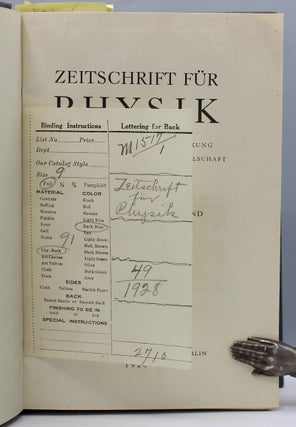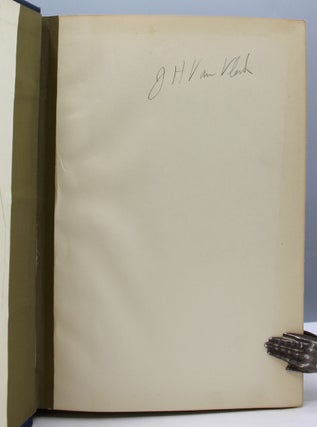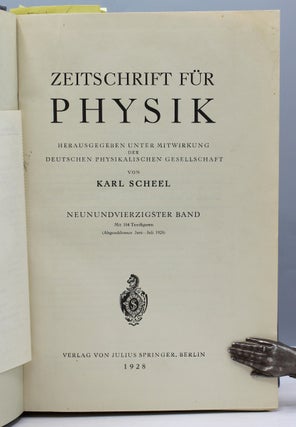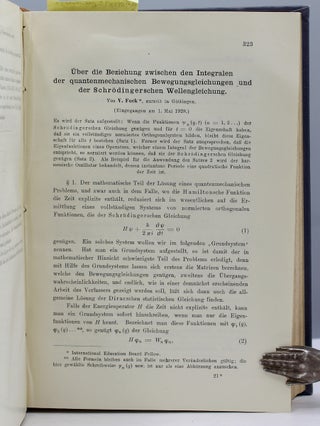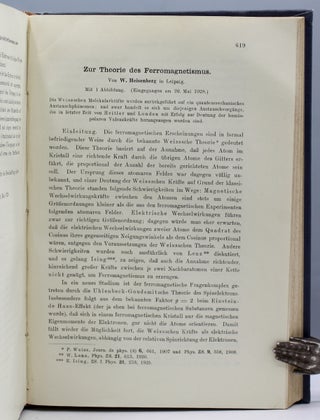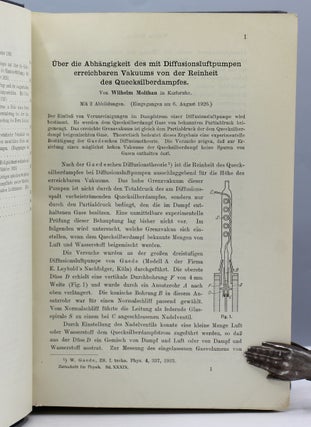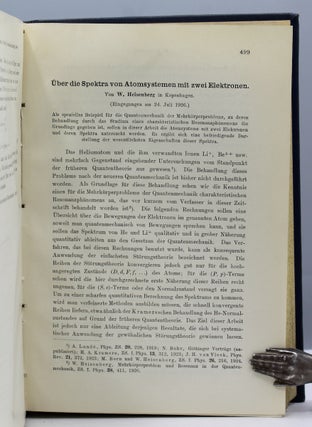“Über die Spektra von Atomsystemen mit zwei Elektronen.” Contained in Zeitschrift für Physik, Vol. 39, Berlin, Julius Springer, 26 October, 1926, pp. 499-518.
Very good. With the pencil signature of Nobel Laureate John H. Van Vleck. Contemporary blue buckram, with title, issue, and year in gilt on spine. Octavo. Item #7984
All attempts to explain the helium spectra using the old quantum mechanics of Bohr and Sommerfeld had failed. Incorporating both Pauli’s exclusion principle and spin into Schrödinger's two-electron wave function, Heisenberg was finally able to derive a good approximation to the emission spectrum of helium. This result marks the second great triumph of wave mechanics after Schrödinger;s treatment of hydrogen. In the course of this derivation, Heisenberg hit upon a new insight and established the principle of “exchange interaction”—a force generated solely by the exchange of positions of two totally indistinguishable quantum particles—which turned out to have much wider implications in both solid-state and nuclear physics. Van Vleck won the 1977 Nobel Prize in physics for his “fundamental theoretical investigations of the electronic structure of magnetic and disordered systems.”.
Price: $750.00



